Day 2 of a four day Autumn Migration tour. A grey and windy day, there were spits of rain at times while we were out but with some careful manoeuvring round the county we were able to avoid the worst of the rain this afternoon. Despite the inauspicious weather, we had a very successful day out.
Our destination for the first part of the day was Titchwell. There weren’t many cars yet when we arrived, so we had a quick walk round the overflow car park first, but it was very quiet, no sign of any hungry migrants stopping off to feed here today. There was nothing on the new squirrel-proof feeders by the Visitor Centre either, so we headed straight out towards the reserve.

We hadn’t gone far along the main path when we ran into a tit flock in the trees. There were lots of Long-tailed Tits flying back and forth across the path, along with a few Blue Tits and Great Tits. We managed to find a Chiffchaff and a Goldcrest in with them too. We heard a Yellow-browed Warbler calling from deeper in the sallows but it did not come out.
As we walked out past the reedbed, a male Marsh Harrier flew over the Thornham grazing marsh and chased a couple of crows out over the saltmarsh. We arrived at the reedbed pool just as a Pintail disappeared into reeds, but everyone managed to get on a Tufted Duck, and a Common Pochard with a couple of Coot at the front, all additions to our trip list.

Out at the Freshmarsh, the water level is currently low, as reserve staff are strimming the islands and margins, coupled with the strong SW wind which tends to push the water away from the bank anyway. Consequently, there were not so many birds on here today and what was here was all gathered right at the back. Several Avocets were also additions to the tour list.
We decided to carry on out towards the beach, but as we walked on we noticed everything spook. We looked up to see a juvenile Peregrine flying over. It didn’t really have a go at anything on the Freshmarsh, but carried on west and disappeared off towards Thornham.
Out at the Volunteer Marsh, there were several Redshanks and Curlews feeding in the muddy channel at the far end.
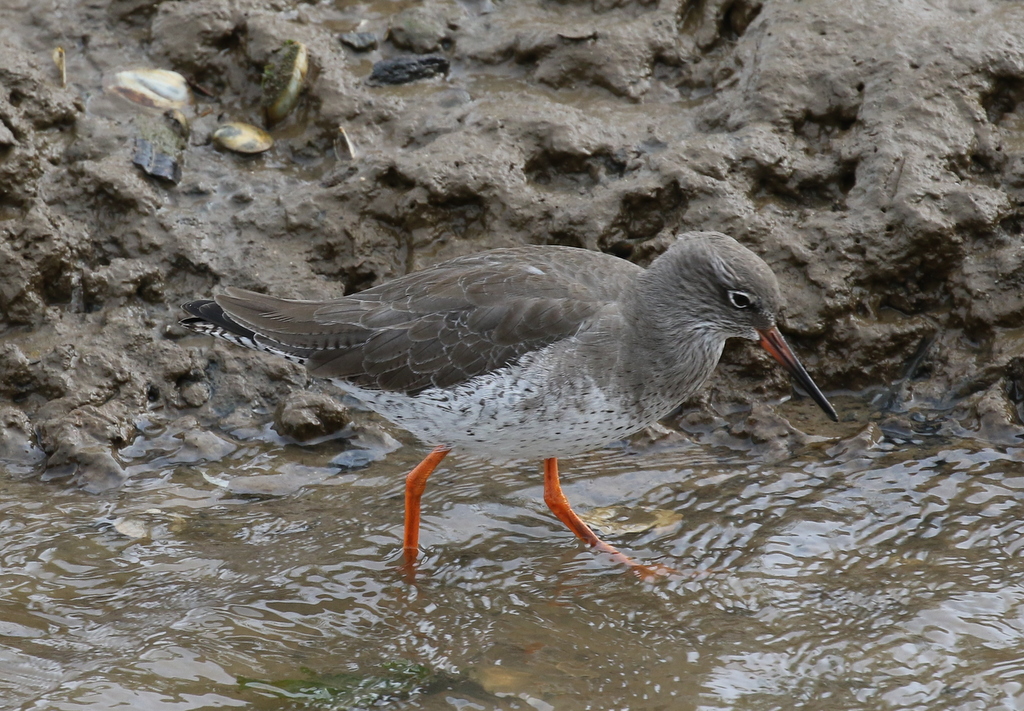
The Tidal Pools are now tidal again, after storms reopened the channel which allows the water to drain. As the tide was already well out, the water level was down, and there were more waders on here today. We could see several Black-tailed and Bar-tailed Godwits, a Grey Plover, and a couple of little groups of Dunlin at the back.
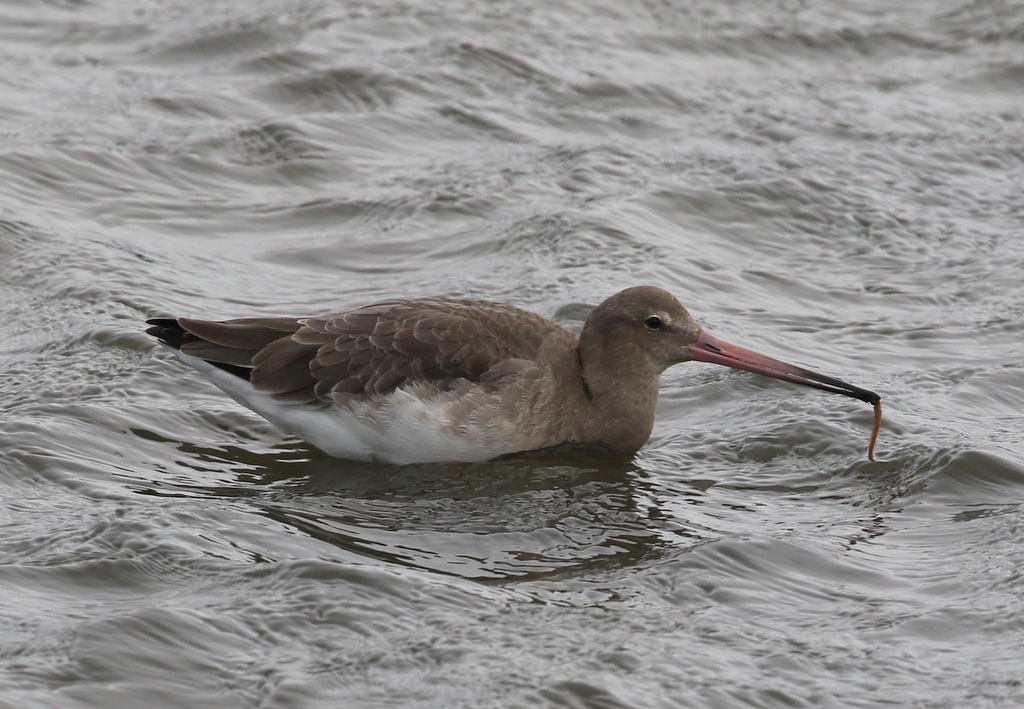
There were more waders out on the beach, down on the mussel beds. We had a nice comparison of Bar-tailed and Black-tailed Godwits in the same scope view and careful scanning revealed a single Knot. The sea looked rather quiet by comparison, although we did find a Great Crested Grebe on the water. A dark juvenile Gannet and a Razorbill both flew past.
Our main target here today was to try to see the Grey Phalarope which had turned up yesterday out at Thornham Point. It was still present this morning, but as we walked west along the beach we got a message to say it had flown off, flushed by a Hobby. It had flown off and come back previously, so we decided to press on anyway. By the time we got out to the Point, it was back on its favoured pool.
A couple of Scandinavian Rock Pipits flushed from the saltmarsh as we positioned ourselves on one side of the pool. The Grey Phalarope was over at the back at first, picking around in the samphire. Then it waded into the water and started swimming around, eventually coming right down to the near edge, in front of us.
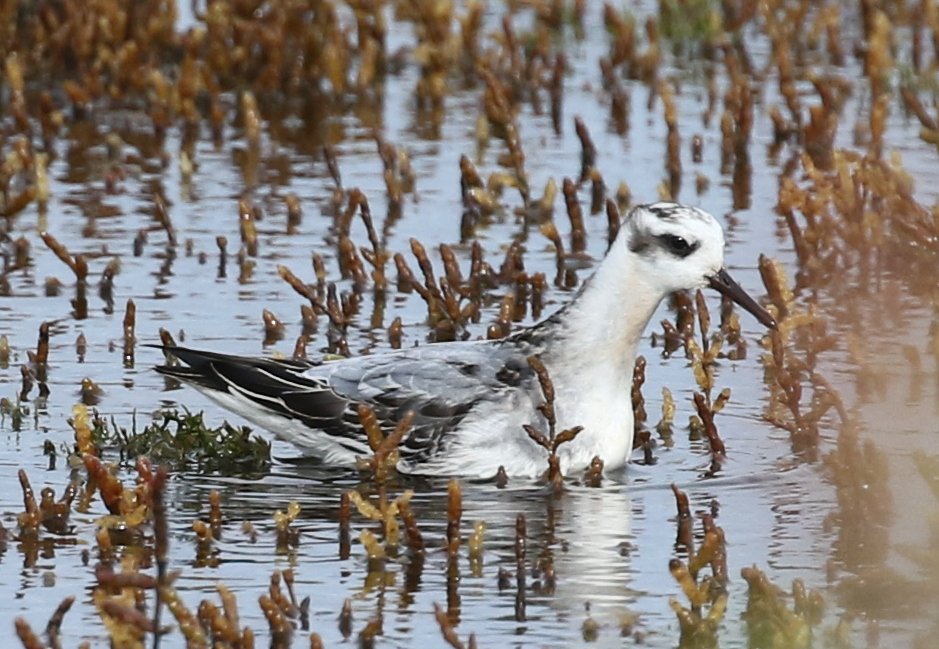
The Grey Phalarope was a young bird, a first winter, with some new grey feathers on its back but still with retained darker juvenile feathers on the back of its neck and wings. We could even make out the remains of the creamy orange wash on the front of its neck. Grey Phalaropes breed in the high Arctic and spend the rest of the year out at sea, migrating down to the coast of South Africa for the winter. They are very prone to be being blown inshore on autumn storms, when they are scarce visitors here. A great bird to see.
Having spent some time watching the Grey Phalarope feeding, we set off to walk back. We went into Parrinder Hide this time, to see if there was anything over the back of the Freshmarsh. There were several Ruff out on the mud and we could now see there were more Avocets in the deeper water over towards the back, along with a nice selection of the commoner dabbling ducks.
It was already getting on for lunchtime, so we set off back along the main path. We hadn’t gone far when we found a couple of people looking at a small mammal on the edge of the path. It was a Water Shrew, feeding on the remains of snails which had been crushed underfoot on the path. They are normally quite secretive, so it was amazing to see one out in the open like this, seemingly completely unconcerned by all the people passing by.
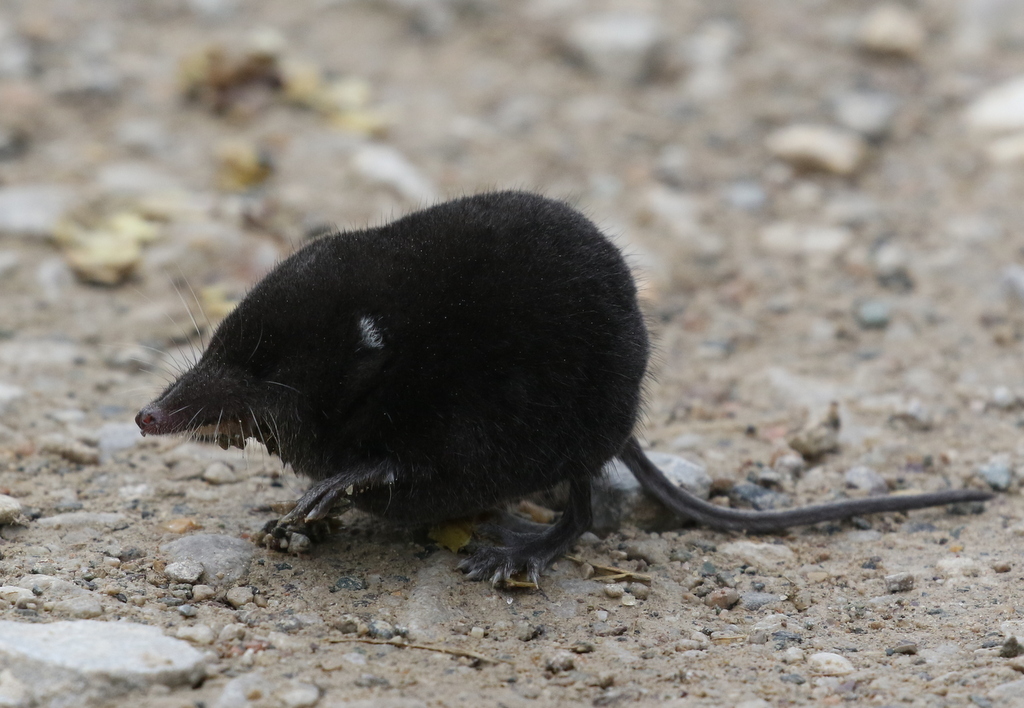
We ate our lunch by the Visitor Centre. There were a few Goldfinches and Chaffinches on the feeders and a large Brown Rat underneath! A couple of Siskins flew over calling.
Afterwards, we walked out along Fen Trail. We found a tit flock again, but it moved too quickly back through the trees to see if there was anything interesting with it. There were more more tits in the trees by the Tank Road, and a Goldcrest which was busy preening deep in the elders.
Out at Patsy’s Reedbed, there were more ducks, including a moulting drake Pintail at the back, to make up for the one which had disappeared into the reeds earlier. There were lots of Black-headed Gulls bathing out in the middle and a Mediterranean Gull dropped in with them briefly. A first winter, its heavier dark bill and black bandit mask gave it away, but it didn’t linger and flew off again west past us.

We had got away with the weather so far today, but now it started to spit with rain. A quick look at the forecast suggested some rain was approaching, so we made our way back to the car park. It looked like it would remain dry further south until later this afternoon, so we decided to head inland. A covey of Grey Partridges ran across the road in front of us. Then as we got out onto the A148, it started to rain.
As we got to the Brecks, we drove out of the rain again, so it was dry when we got to our destination, even if it was grey and rather windy still. We had come to look for the Stone Curlews which gather here in the autumn. They were hard to find at first, but we managed to locate one then two, hiding behind the ridges of soil and clumps of nettles, trying to shelter from the wind. Gradually they became more active, and we counted up to eight Stone Curlews from here. We had nice views of them through the scope.
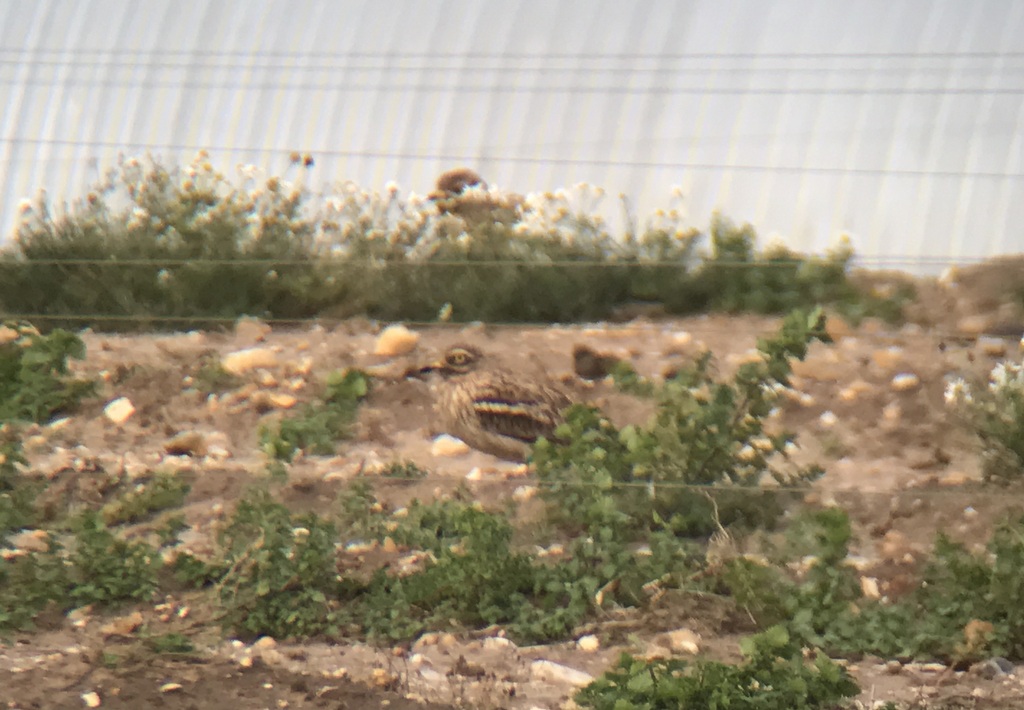
There were lots of gulls in the fields too, mainly Lesser Black-backed Gulls. Scanning through them, we found an adult Yellow-legged Gull first. It was colour-ringed, with a red ring, but it was too far away to read the lettering. We found a Caspian Gull next, an immature in its 2nd winter/2nd calendar year, but it flew off back to the next field, out of view, before everyone could get onto it. Then we picked out a second Yellow-legged Gull, this time also a 2nd winter. There were probably a lot more other gulls there too, but most were out of view from here.
Given we were upwind from them and the Stone Curlews were sheltering from the wind from this direction, we drove round to the other side of the field to try to see if there were more there that we couldn’t see. We were much further away, but scanning with the scope we could now see where the other Stone Curlews were hiding. The light was fading and they were very well camouflaged against the bare stony ground, but we counted at least 28 Stone Curlews from here. Numbers are gradually dropping now, as birds head off south for the winter, but that was still an impressive total.
As we drove back, we quickly ran into heavy rain. We had been very lucky, managing to avoid the worst of the weather today.
















